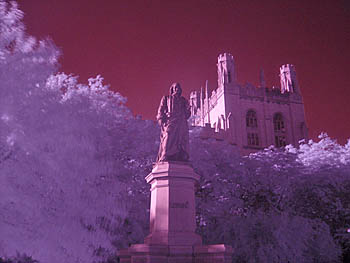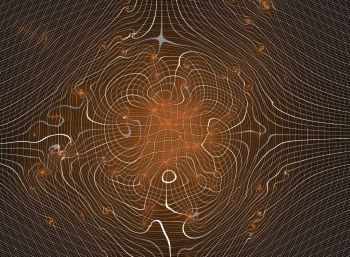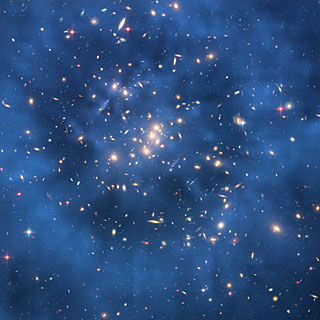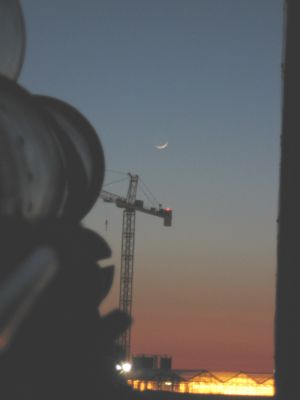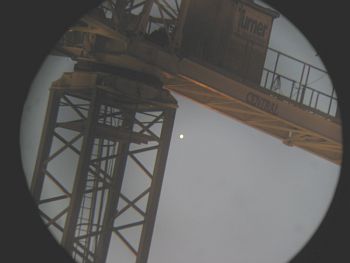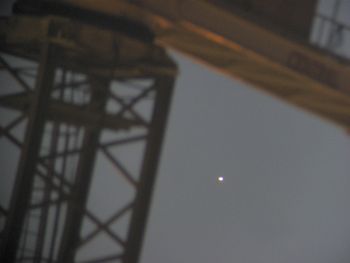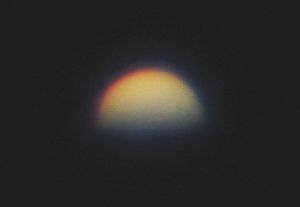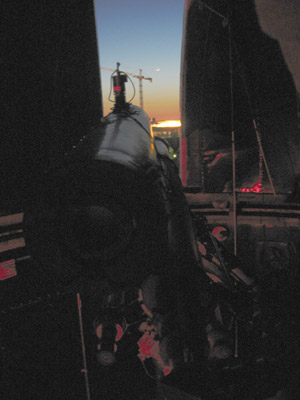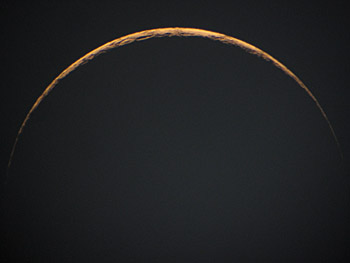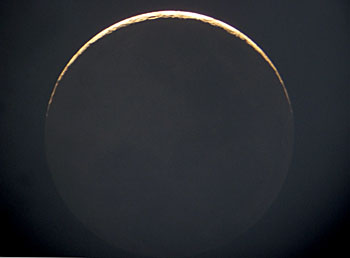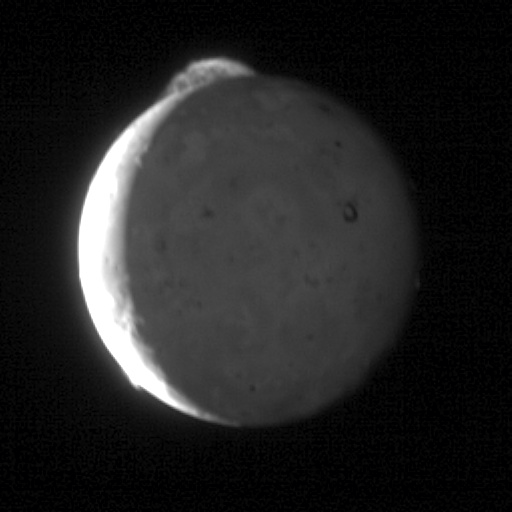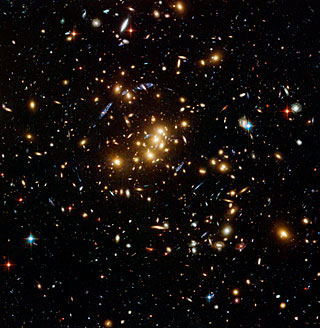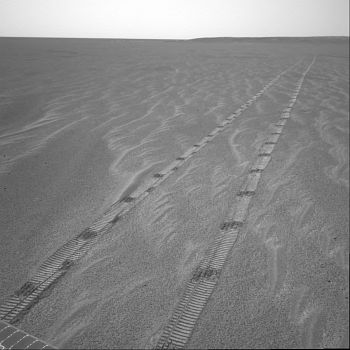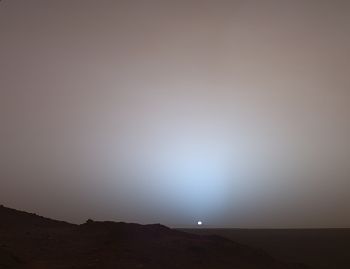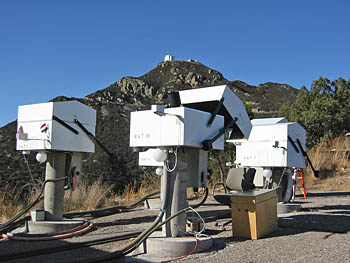The Planetary Society's Blog has the article.
The Mars Reconaissance Orbiter's HiRISE imager and the Mars Odyssey's THEMIS IR imager worked together to confirm these are caves--dark during the day, cooler than sunlit surfaces during the afternoon (but still warmer than surface shadows), warmer at night. These are huge skylights--over 300ft in size, and they overhang, meaning the cave is bigger than the skylight. The caves found are all big, partially because the THEMIS imager has a resolution limit of 100m, so they couldn't use it to refine candidate holes found in the visible HiRISE data. The diameters of the caves were from 100 to 252 meters.
One of the caves, on the northeast flank of Arsia Mons:
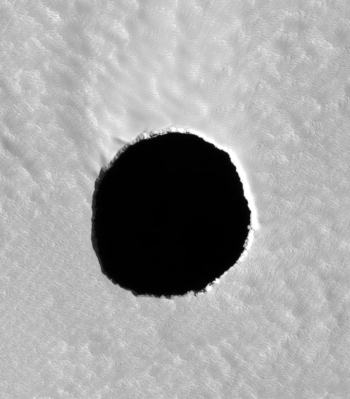
They were all found on the slopes of Arsia Mons, the southernmost Tharsis volcano. A global view here; it's the circular blob in 5 o'clock position from the center. These caves are likely the result of lava tubes, formed when lava cools on the surface and emptying out below.
On one of the seven skylights, they saw the floor lit; this allowed them to calculate the depth of the cave at 130 meters. The lit cave is shown below.
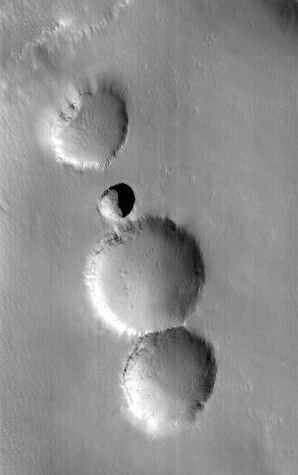
As Cushing, Titus, Wynne, and Christensen wrote in their conference paper, these caves offer sanctuary from all sorts of radiation, both UV and cosmic rays, that exist on the surface of Mars and would be the primary limiter of life at Mars. The caves' existence is enough to spring to life the imagines of the unseeable world inside of them; we will likely never know the wonders of what they contain in our lifetimes. It is unfortunate that they are currently only known on the slope of a Tharsis volcano--high in the thin Martian atmosphere, we are limited in our ability to land a spacecraft there easily.
Images courtesy NASA/JPL/University of Arizona

